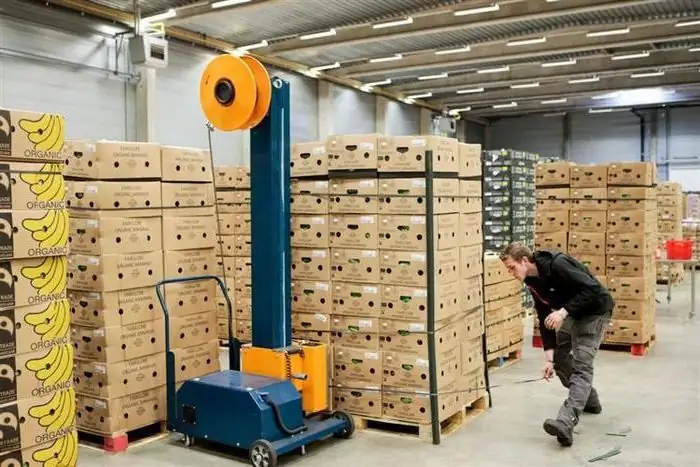2025 Author: Howard Calhoun | [email protected]. Last modified: 2025-06-01 07:12:56
All of us at work are faced with a huge number of items around us: inventory, equipment, office equipment, furniture, stationery, and who knows what else … But how are these things correctly called in accounting and what is this concept? So, the topic of our today's conversation: "Inventory and Materials: decoding, essence, methods and rules for their evaluation." Started?
What is inventory
Inventory and materials are inventory items, i.e., the assets of the organization that are used as raw materials, materials in the production process of products intended for further sale, provision of services. In other words, everything that an enterprise has is goods and materials. Decoding, as you can see, is straightforward. And so many people think until it comes to taking into account and evaluating these very values.
According to Federal Law No. 129-FZ and the Accounting Regulations in the Russian Federation, organizations must periodically conduct an inventory. About what this procedure is, and will be discussed further. So…

Inventory at the enterprise: what is it and why is itneed
What does TMC mean, we briefly figured it out. What is an inventory? This is a check of the real availability of inventory in the enterprise. It is carried out in order to control property and funds. The end result of the event is a comparison of the actual balance of material assets indicated in the inventory list with accounting data at the time of the rediscount.
It is possible to conduct a complete inventory or a selective one by decision of the management. Below we consider the basic rules for the inventory of goods and materials.

Act in accordance with the law
For reliable accounting and reporting, organizations should conduct an inventory of their property, during which they check and document its condition, assessment and availability. The timing of this event and its order are determined by management.
There are times when inventory is mandatory:
- When transferring property for rent, sale, redemption.
- Before the annual report.
- When changing responsible persons.
- When a shortage is detected, fire, in other extreme situations.
- In other cases, in accordance with the legislation of the Russian Federation.
The discrepancies found in the inventory input between the actual amount of property and accounting data will be reflected in the accounts in this order:
- Excess property is credited, and a certain amount is recorded on the financial result of the enterprise.
- Shortages within the norm are attributed to the natural costs of production. Everything that is above the norms is recovered from the perpetrators. If the perpetrators are not identified or their guilt is not proven, then the shortage is attributed to the financial result.

Reasons for inventory inventory
Before the inventory, the director signs an order in the INV-22 form. It is prepared, as a rule, no later than ten days before the proposed event. This document must also indicate the reasons for the inventory. They can be different:
- Control check.
- Change of materially responsible persons.
- Theft detection.
- Transfer of property for sale, rent, redemption.
- In case of emergency.
Types of inventories
- Full. It affects all property and liabilities of the firm. This is a very time-consuming process, carried out once a year before the submission of the annual report.
- Partial. Its purpose is to analyze one type of enterprise funds.
- Custom. This is a kind of partial inventory, which is carried out on discounted goods, damaged and obsolete.
There is another classification. According to the types of economic activity, there are planned, unscheduled and repeated inventories. Planned are carried out periodically according to the schedule. Unscheduled - these are sudden checks. Well, repeated ones are carried out in cases of need, when there were problems with the data of the main check, to clarify some positions.

Inventory steps
The inventory process itself consists of several stages. The first is preparatory. Everything is simple here. This is the preparation of valuables for recalculation, as well as the preparation of all documents, the compilation of lists of all financially responsible persons, the determination of methods and timing of the event.
The second stage is the actual verification of the real availability of material assets and the compilation of inventory inventories. It should be noted that acts and inventory lists are compiled according to standard forms and are primary accounting documents. They can be handwritten or printed. In any case, they must be correctly formatted.
Inventories indicate inventory items, their quantity and cost. Errors made in the preparation of statements must be corrected in both copies. An incorrect entry is crossed out with one line, and the correct value is entered above it. All corrections are agreed between members of the commission and materially responsible persons. In the inventory lists, it is impossible to leave blank lines (if there is space left, dashes are put). The statements are signed by all members of the commission and materially responsible persons.
If the re-account was carried out due to a change in responsible persons, then the act at the end is signed by a new materially responsible person, confirming that he accepted the goods and materials.

The third stage - very important - is the analysis of inventory data and reconciliation of information with what is listed in the accounting records. In fact,the difference between the actual availability of valuables and accounting data is revealed. Management then looks for reasons for discrepancies, if any.
Well, the fourth stage is the correct execution of documentation. It is precisely at this stage that it is necessary to bring the inventory results into clear correspondence with accounting data. Financially responsible persons guilty of incorrect accounting are punished.
This is how the inventory of goods and materials is carried out. You already know the decoding of this concept and the essence of the procedure. We also considered the stages of holding such an unloved by many (yes, almost all) event. And now let's talk about what should be attributed to inventory in fact. Is all property valuable? What methods of valuation of goods and materials exist today?
Inventory valuation methods
As already mentioned, goods and materials (decryption given at the beginning of the article) is a term that is used to define materials owned by the enterprise. They may also be intended for sale to the consumer or used in the manufacture of their own products.

There are some of the most common methods for estimating them:
- Piece valuation. Each item is calculated individually.
- First stock method, otherwise referred to as "First to stock - first to production" (FIFO method). It is based on the assumption that those items that are in stock the longest are the fastest sold or used.
- Methodthe last stock, the second name is “Last in stock - first in production” (LIFO). The estimate is based on the assumption that the items bought last will sell first.
- Average cost method. In this case, there is an assumption that all goods and materials are mixed in a random sequence, and the sale occurs at random.
- Moving average method. Here it is assumed that the flow of goods is randomly mixed with each new arrival of goods, and their sale occurs just as randomly.
Combining different methods
It should be noted that for the benefit of the enterprise, you can combine all kinds of methods for assessing goods and materials. If there are homogeneous stocks with constant prices, then one method can be used. In practice, such cases are extremely rare. After all, usually the materials are very different, therefore they use different methods. Stocks are conditionally combined into groups, and each has its own method. You decide which options to choose, the main thing is that this is fixed in the accounting policy of the enterprise.

In our article, we discussed how inventory is deciphered, what methods exist for assessing the property of a company, what it is and why an inventory of inventories is needed and how it is carried out. All these questions are not so complicated, however, a beginner in the field of accounting may have certain problems. However, they are also solved with the accumulation of experience, the main thing is to understand what should be attributed to inventory items, because this will greatly facilitate them.correct accounting.
Recommended:
Inventory is Inventory accounting. Enterprise stocks

Stock is a form of material flow existence. On the way from the source of occurrence to the final consumer, it can accumulate in any area. That is why it is customary to distinguish between stocks of materials, raw materials, finished products and other things. It turns out that inventories are materials, raw materials, components, finished products, as well as other valuables that await personal or industrial consumption
Act of inventory of emission sources. Order on the inventory and the composition of the inventory commission

Inventory of waste emissions into the atmosphere is a set of activities that are carried out by nature users, including systematization of data on pollutant emissions, identification of their location, determination of emission indicators. Read more about how this process goes and how the act of inventory of emission sources is filled out, read on
Inventory in a pharmacy: procedure, documents, composition of the inventory commission

Inventory is the verification of a firm's inventory on a given date by comparing actual data with balance sheet information. This is the main way to control property values. Read more about how inventory is carried out and processed in a pharmacy, read on
Re-sorting of goods is a simultaneous shortage of one item of goods and a surplus of another. Accounting for sorting during inventory

When conducting an inventory at trading enterprises, shortages, surpluses, and regrading are often revealed. With the first two phenomena, everything is more or less clear: there is either a lot of this or that product, or a little. Re-sorting of goods is a rather unpleasant and difficult situation
Inventory - what is it? Goals, methods and types of inventory

Inventory is an inventory of property designed to identify discrepancies between the actual number of valuables and the information contained in the company's internal documentation. The article lists the main varieties of such a check. The procedure for conducting an inventory is given

